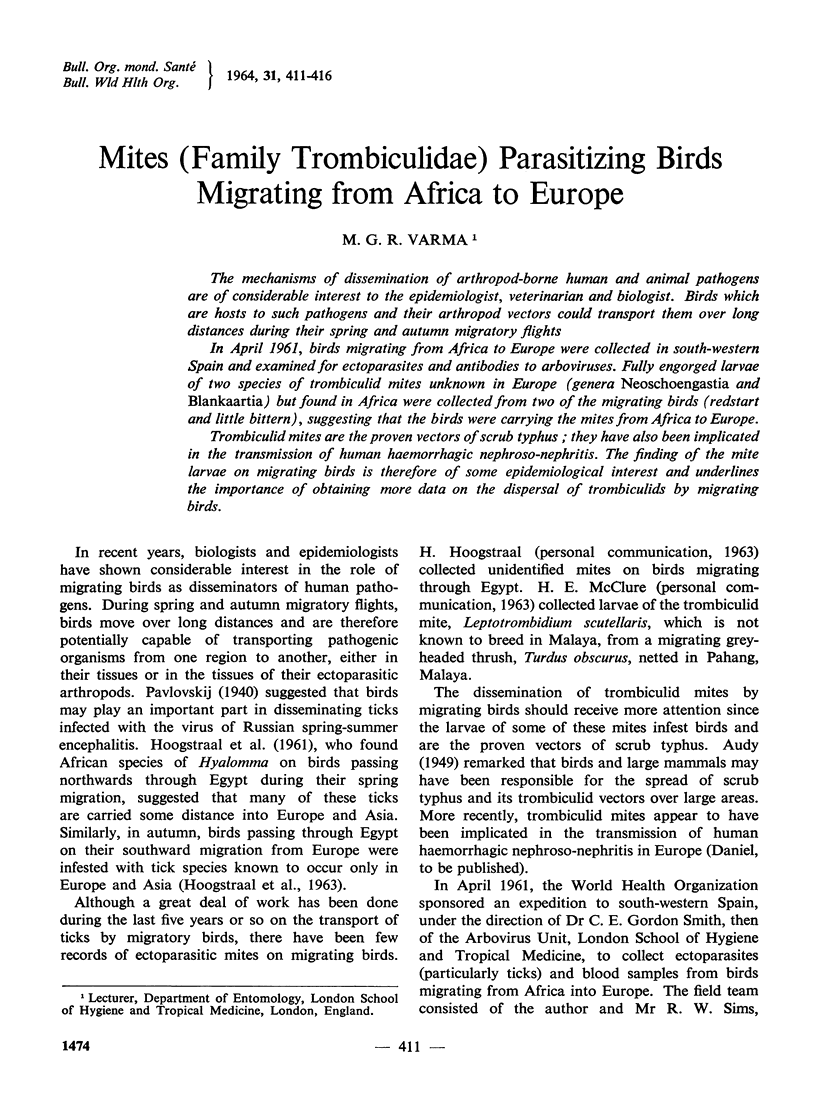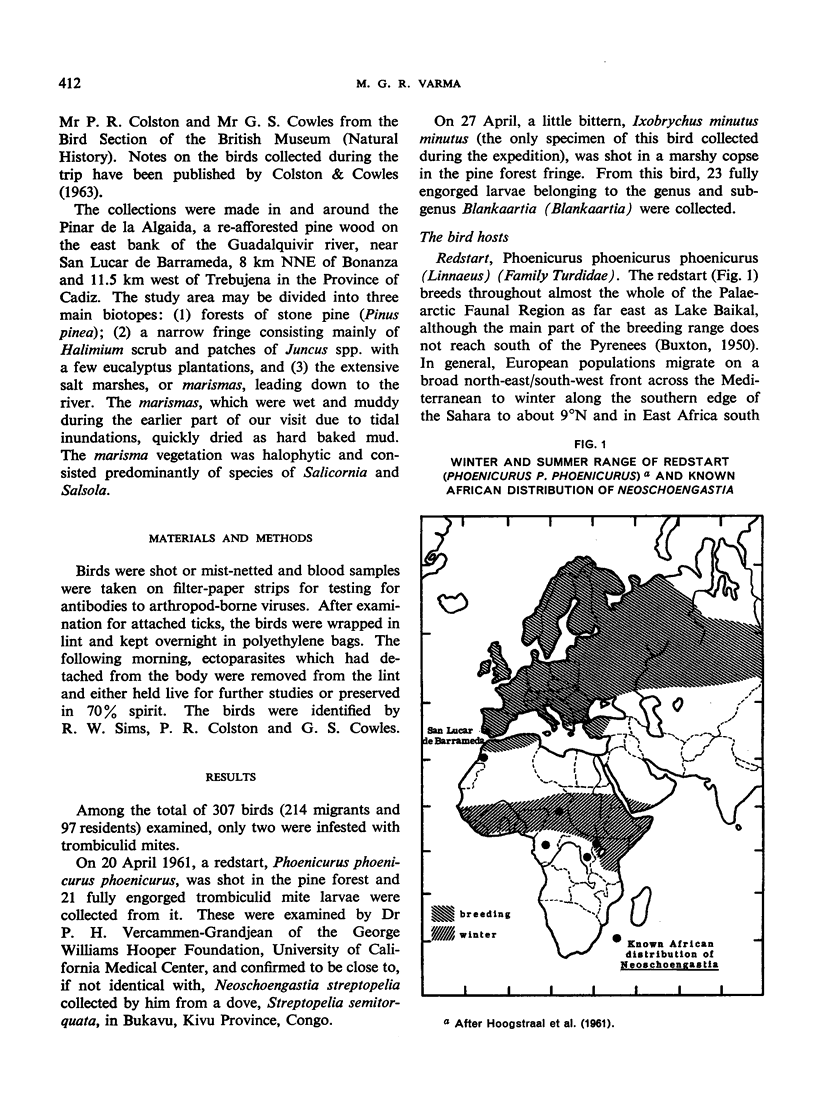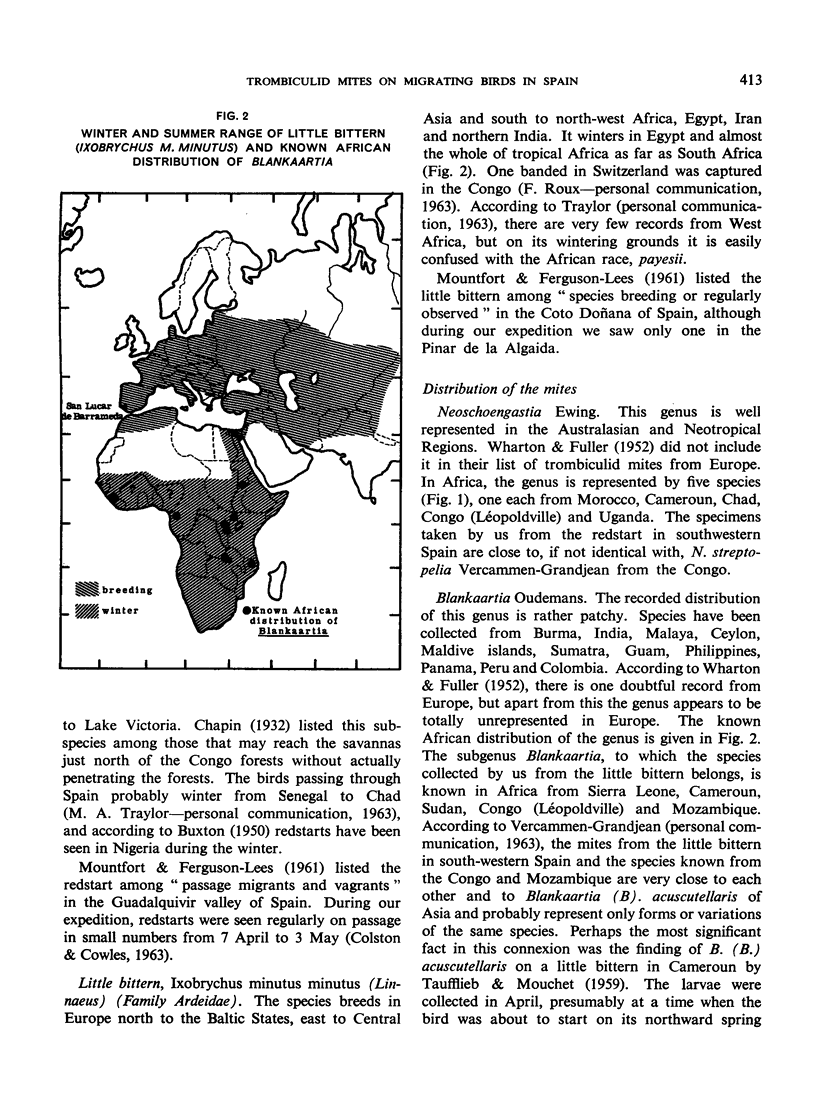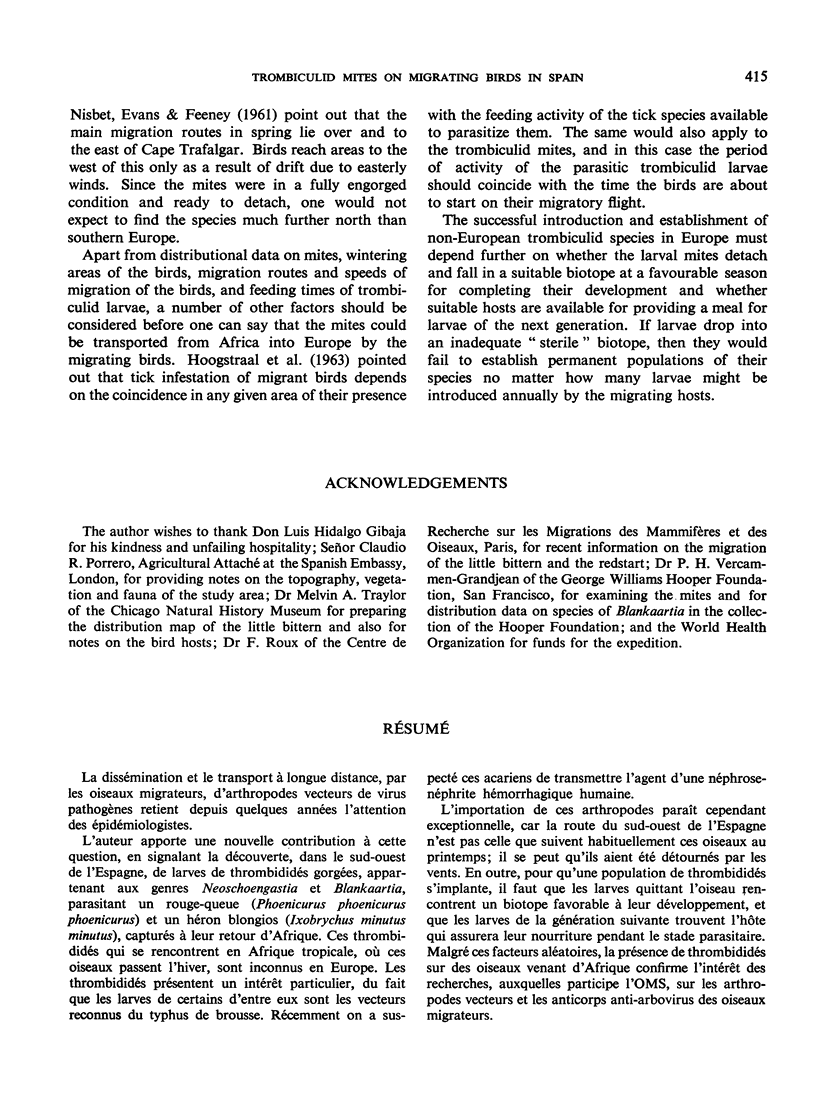Abstract
The mechanisms of dissemination of arthropod-borne human and animal pathogens are of considerable interest to the epidemiologist, veterinarian and biologist. Birds which are hosts to such pathogens and their arthropod vectors could transport them over long distances during their spring and autumn migratory flights.
In April 1961, birds migrating from Africa to Europe were collected in south-western Spain and examined for ectoparasites and antibodies to arboviruses. Fully engorged larvae of two species of trombiculid mites unknown in Europe (genera Neoschoengastia and Blankaartia) but found in Africa were collected from two of the migrating birds (redstart and little bittern), suggesting that the birds were carrying the mites from Africa to Europe.
Trombiculid mites are the proven vectors of scrub typhus; they have also been implicated in the transmission of human haemorrhagic nephroso-nephritis. The finding of the mite larvae on migrating birds is therefore of some epidemiological interest and underlines the importance of obtaining more data on the dispersal of trombiculids by migrating birds.
Full text
PDF





Selected References
These references are in PubMed. This may not be the complete list of references from this article.
- HOOGSTRAAL H., KAISER M. N., TRAYLOR M. A., GABER S., GUINDY E. Ticks (Ixodoidea) on birds migrating from Africa to Europe and Asia. Bull World Health Organ. 1961;24:197–212. [PMC free article] [PubMed] [Google Scholar]
- HOOGSTRAAL H., KAISER M. N., TRAYLOR M. A., GUINDY E., GABER S. Ticks (Ixodidae) on birds migrating from Europe and Asia to Africa 1959-61. Bull World Health Organ. 1963;28(2):235–262. [PMC free article] [PubMed] [Google Scholar]


